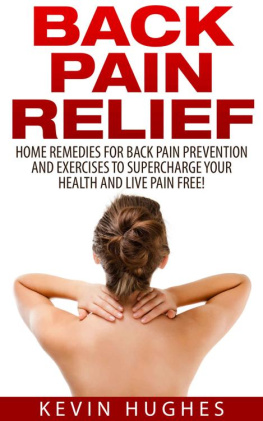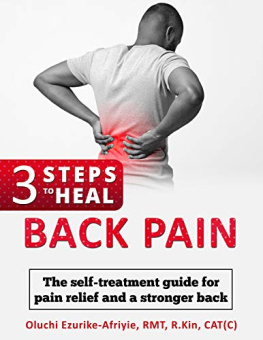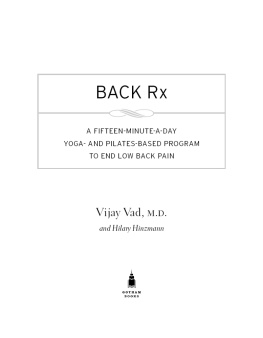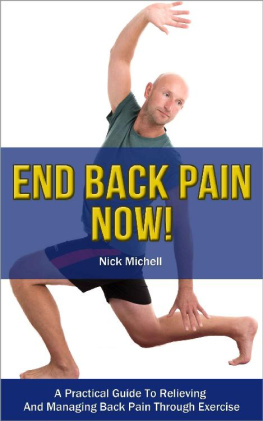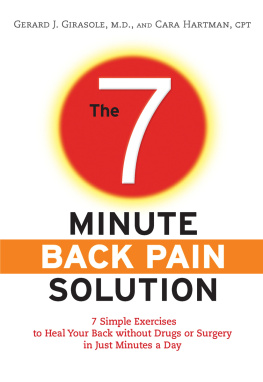Copyright 2021 by Rockridge Press, Emeryville, California
No part of this publication may be reproduced, stored in a retrieval system, or transmitted in any form or by any means, electronic, mechanical, photocopying, recording, scanning, or otherwise, except as permitted under Sections 107 or 108 of the 1976 United States Copyright Act, without the prior written permission of the Publisher. Requests to the Publisher for permission should be addressed to the Permissions Department, Rockridge Press, 6005 Shellmound Street, Suite 175, Emeryville, CA 94608.
Limit of Liability/Disclaimer of Warranty: The Publisher and the author make no representations or warranties with respect to the accuracy or completeness of the contents of this work and specifically disclaim all warranties, including without limitation warranties of fitness for a particular purpose. No warranty may be created or extended by sales or promotional materials. The advice and strategies contained herein may not be suitable for every situation. This work is sold with the understanding that the Publisher is not engaged in rendering medical, legal, or other professional advice or services. If professional assistance is required, the services of a competent professional person should be sought. Neither the Publisher nor the author shall be liable for damages arising herefrom. The fact that an individual, organization, or website is referred to in this work as a citation and/or potential source of further information does not mean that the author or the Publisher endorses the information the individual, organization, or website may provide or recommendations they/it may make. Further, readers should be aware that websites listed in this work may have changed or disappeared between when this work was written and when it is read.
For general information on our other products and services or to obtain technical support, please contact our Customer Care Department within the United States at (866) 744-2665, or outside the United States at (510) 253-0500.
Rockridge Press publishes its books in a variety of electronic and print formats. Some content that appears in print may not be available in electronic books, and vice versa.
TRADEMARKS: Rockridge Press and the Rockridge Press logo are trademarks or registered trademarks of Callisto Media Inc. and/or its affiliates, in the United States and other countries, and may not be used without written permission. All other trademarks are the property of their respective owners. Rockridge Press is not associated with any product or vendor mentioned in this book.
Interior and Designer: Lindsey Dekker
Art Producer: Janice Ackerman
Editor: Sean Newcott
Production Manager: Michael Kay
Production Editor: Melissa Edeburn
Illustrations Christy Ni, 2021
ISBN: Print 978-1-64739-233-8 | eBook 978-1-64739-234-5
R0
To every patient I have treated through my many years of practice. Thank you for sharing your healing journeys with me.
Contents
From an early age , I had a powerful calling to become a healer. I could always instinctively sense what other people were feelingtheir happiness and joy, but also their suffering. When I discovered the world of chiropractic medicine, I found a system of healing that allowed me to actually do something about peoples pain. I could make their lives better using only my hands and my mind.
Chiropractic care is very effective for treating back pain. Almost all the patients I saw in my office were suffering from back pain, so treating it became a central focus of my work. And Im glad it did.
Early in my career, I offered my clients standard chiropractic adjustments. I performed spinal manipulations that helped relieve their nerve irritation and stop their pain, but often only temporarily. Some patients had to see me repeatedly, which was not what I wanted. I needed to understand why their pain persisted and figure out how to give them the tools to stop the pain from returning.
Through my decades of practice and research Ive found one simple truth: For many people, regardless of whats causing their back pain, the most effective remedy is to build a strong and flexible body through stretching and exercise.
My goal with The Back Pain Relief Plan is to provide you (or a friend, a loved one, or anyone else you know who is living with back pain) with a customizable pain-relieving training program. I am pleased to be able to share with you the safe, effective training program Ive worked to develop with my patients. My program focuses on the lower back, the most common area of pain and discomfort, but you can use it to treat the rest of your back as well.
This book lays out a series of exercises, stretches, and low-impact cardio workouts that range from easy to hard. In addition, it makes recommendations about diet, sleep, and workspace ergonomics.
When youre in pain, it can be hard to imagine life without it, especially if your pain comes and goesjust when you think youve moved past it, its back. I know all about that frustration, but there is hope. When you are experiencing your worst pain, know that countless people have defeated their own back pain with a smart, consistent stretching and exercise program.
I encourage you to absorb the information in this book. Once you understand why you have back pain, you can get to work on treating it.
You possess incredible healing power, but it takes courage and fortitude to tap into it. I hope this book helps you find that power and sets you off on your journey toward a life without back pain.
L ower back pain is one of the most common health problems that brings people into their doctors office. This pain doesnt discriminate. It affects both young and old, people who are otherwise totally healthy and those with preexisting conditions, workers who sit at computers all day and those who drive forklifts or work in factories.
These statistics from the American Chiropractic Association illuminate the scope of the back pain problem:
| Approximately 31 million Americansnearly 1 in 10are experiencing lower back pain at any given time. |
| Back pain is the leading cause of disability, preventing many people from engaging in work and everyday activities. |
| From 1990 to 2015, disability claims relating to back pain increased by 54 percent. |
| Approximately 80 percent of the population will experience back pain during their lifetimes. |
| Each year, lower back pain costs Americans at least $50 billion, not including lost wages and decreased productivity. |
To understand why back pain, and particularly lower back pain, is so widespread today, travel back in history with me. Roughly 25,000 years ago, humans had the same basic bodies we have today. It took hundreds of thousands of years for the human form to evolve to support tremendously active lives: walking every day in search of food, chasing animals (and occasionally running from them), climbing trees to gather fruit, and digging into the ground to find edible roots.
The human body is no longer in sync with modern times. Many individuals have lost strength as a result of a sedentary lifestyle. Others have occupations that require them to perform repetitive physical tasks that put a great deal of strain on the lower back. In both cases, the human body is working in a way it was not evolved to.
Lower back pain in particular is on the rise. Like so many chronic conditions, including diabetes and heart disease, lower back pain is usually the product of a perfect storm of modern factors: eating poorly, packing on extra pounds, not getting enough sleep, spending too much time sitting around, not having the time and energy to exercise, and feeling overloaded by stress.




